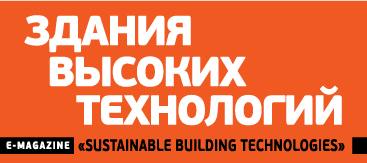
Welcome speech from keynote leaders of high-tech building trends in the world

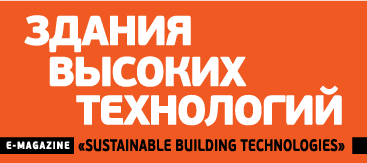
It was our dream to create a magazine that would be different from the best traditional narrow-profile professional magazines which would be interesting to all of those who influence decision-making process in construction industry, all those who are involved in the design, construction, operation, as well as end using of the building. Finally we are publishing our first issue which is directed to an architect and an engineer, an energy modeller and environment specialist, an investor and other professionals responsible for the creation and development of the industry of modern high-tech buildings. Only in high-tech buildings there is a unifying framework for all professionals of modern construction industry.
The whole experience of the construction industry of the twentieth century suggested that the building itself is a fairly conservative industry, poor in use of modern scientific and technology discoveries. High technology trend has forced necessity of developing modern construction industry. High technology is a breakthrough in the twenty-first century construction industry.
It is obvious that to master high tech trends in construction professionals from market from different realms should learn about the features and benefits of high technology in construction. To discuss the trends professionals need to speak the same language and understand each other, all participants of the construction process. That is why we have created the «Sustainable Building Technologies» e-magazine. The mission of the magazine is to attract attention and to explain the benefits of high technology to improve the quality of life and the environment. High technology is a trend with such main priorities as energy efficient, smart, and environmentally friendly and comfort solutions which care for the future generations.
Today, the world’s as well as Russia’s construction industry is experiencing an interesting stage in its development, which is focused in the use of high technology and alternative energy sources. To ensure the task to reduce energy consumption up to 40 % by 2020 can be reached neither by increasing thermal performance of the building envelope nor by improving the conventional air-conditioning systems. Greatest impact in energy savings can only be only achieved through a combination of activities, option ranging of optimal architectural solutions with regards to the direction of the energy impact of climate on the building exterior, the use of alternative energy, as well as the use of high technology to manage all types of building services. This idea sounds at all levels but we all need examples of completed projects, procedures and regulations that help professionals implement these technologies in the construction industry of the XXI century. High-tech and high ecological security trends should be the hallmark of modern construction industry. That is the main mission of the magazine.
High-tech is not a new architectural trend in the global construction industry, such as energy-efficient buildings, zero-energy buildings or bio-architecture. In each of these areas architectural elements of high technology are always presented. A number of green building rating systems are developed to assess the quality of the human environment of any of the architectural style. All of them encourage the use of high technology in architecture, engineering, energy, maintenance, etc.
The task of the magazine is to disseminate knowledge and demonstrate the best examples of high-tech and green building trends to show the beauty of architecture of these buildings.
Some people believe that high technology is a sign of just foreign construction industry, but those professionals who are interested in the domestic construction can cause a sufficient number of examples of buildings of high technology in our country. The mission of the magazine is to increase the information content of the Russian professional society about domestic successes and achievements. The second aim of the magazine is the distribution of foreign and domestic experience among teachers and students because the success of high technology in the construction on large extent depends on the training of young professionals.
E-magazine «Sustainable Building Technologies» is the open society of professionals.
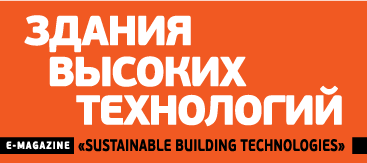
I am pleased to welcome a new e-magazine and website «Sustainable Building Technologies». The e-magazine is very timely. This professional e-magazine with his authority can influence the development of the construction industry in Russia in the field of green building. The good news is that the magazine pays a lot of attention to technical information on building processes in Russia. Public Corporation «Russian Railways» as one of the leaders in the application of innovative construction technologies in Russia is very pleased to interact with the leading technical magazine in Russia «Sustainable Building Technologies».
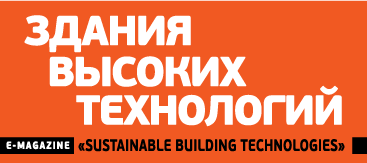
In 2008, ASHRAE published its first issue of High Performing Buildings magazine with the objective being to win acceptance of the philosophy that buildings can be successfully constructed and renovated to be energy efficient, offer productive work environments, and have minimal impact on the surrounding environment and our global climate. The strategy employed in the magazine to achieve this purpose was simple: To provide examples of buildings that were not only designed to be high performing but which actually achieved their designer’s – and owner’s – objectives.
Five years later, the seeds of market transformation have taken root, and several factors have become apparent. First is the benefit of integrated design. To achieve a building that functions efficiently, in some ways like a machine, the time has passed when architects, engineers, contractors, and suppliers work in isolation, one professional handing off work to another. The new normal is the team concept, where all voices and perspectives are melded into one, harmonized to achieve the desired result. The building owner is no longer on the outside waiting to receive a finished product, but rather the owner’s facility staff are team contributors, articulating needs and expectations, and in the process becoming educated as to what will be required to prevent the building from fading from «green» to «grey».
Another factor is measurement. What defines a high performing building? Building performance must be quantitatively assessed in order to determine the success of the design, operation and maintenance. What to measure, how to measure, and how often to measure all are questions that must be answered. It is clear that to determine the performance of a facility, energy and water use and indoor environmental quality need to be analyzed throughout a building’s service life.
A third is commissioning. Just as design is an integrated process, the term integrated commissioning is now a post-design reality. All activities of the building’s operation and maintenance must be considered and all members of the design, operation and maintenance teams must be involved.
And of course there is the human factor. Groups like ASHRAE and ABOK need to help engineers gain the knowledge to specify products that employ the latest technologies and need to design systems that enable components to work together in the most energy efficiency manner.
That is why ASHRAE publishes High Performing Buildings: To provide knowledge based on experience and availability of new technologies. And that is why ASHRAE cooperates with ABOK to allow case studies from High Performing Buildings to be translated and reprinted in SBT.
Architects, engineers, suppliers, contractors and operators share the single goal of creating built environments that are environmentally sustainable. The path to reaching that goal passes through all countries where building professionals strive for excellence.
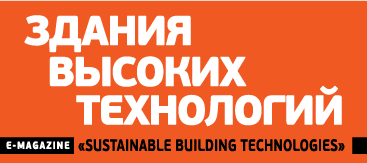
Guy Eames, CEO Green Building Council Russia, MSc
I would like to thank ABOK and Marianna Brodach in particular for the launch of «Sustainable Building Technologies». It’s wonderful to see a new industry developing in Russia, one which has the potential to improve the lives of millions and bring Russian living standards up to those in Europe. The multi-billion dollar «Green Building» Industry worldwide represents the most progressive and perspective section of the construction sector – a new multi-disciplinary approach to how to construct, manage and even demolish buildings.
I look forward to reading future issues of «Sustainable Building Technologies» and cooperation between the 300 members of the Green Building Council Russia, of which ABOK is a founder, with the 50–70,000 specialists readership.
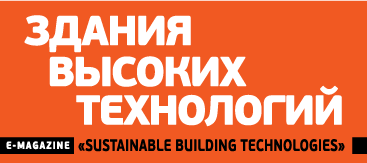
I am pleased to welcome readers so timely new e-magazine «Sustainable Building Technologies».
Today we are seeing a growing interest in Green Building. Indeed it is fashionable to work in green office to live in a healthy environment. In Russia now we have an influx of new best accessible technologies actively developed green technologies and materials. We observe disseminating knowledge in our country. Market participants are beginning to look closely to the benefits of green construction. Investors realize the economic benefits of green building. The first objects in our country are in the process of environmental certification. I am sure that readers will be able to find a lot of useful information on pages of the new e-magazine.
Now an expert community is consolidating successfully. Example – Russia’s first national standard for environmentally friendly construction – National Standard GOST R 54964–2012 «Conformity assessment. Environmental requirements for real estate» which was developed based on the system of voluntary certification of real estate – «Green Standards» and which is starting to work from 1 March 2013. The new e-magazine is also an effective tool for the consolidation of the industry experts.
Creating the national standard
GOST R 54694–2012 is the result of the hard work that had the Ministry of Natural Resources together with NP «Green standards centre», NP «ABOK» and the National Association of Builders (NOSTROY) which also took into account the experience of the Olympic corporate «green» standard developed by State Corporation «Olympstroy».
The document is to be the basis for a unified nationwide database of national rating system. This document is being developed in the framework of the instructions of the Government of the Russian Federation. It was the first comprehensive document to coordinate the interests and needs of the construction industry with extensive environmental requirements.
The main objective of the National Standard is setting benchmarks of environmental requirements in the construction industry for all participants in the construction process – from customers and developers to builders.
It is obvious that today the Russian government is taking its first real steps in the development of ecological construction in Russia. Principles of State Policy in the field of environmental development of the Russian Federation for the period up to 2030 approved by the President of Russia.
In my opinion the government should encourage the use of environmental standards and to create favourable conditions for a reasoned application of new technologies and green investments in construction in early stage of market development.
I also believe that in the nearest future some of green standards will be mandatory rules and terms of legislation and from this stand point the e-magazine «Sustainable Building Technologies» is one of the key tool to facilitate the process.
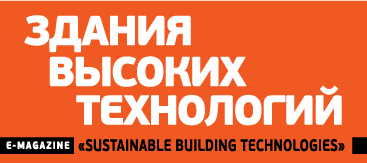
Green Building is one of important directions of modern urban planning. It considers all socio-economic and ecological requirements in both designing and construction of buildings.
Azerbaijan specialists pay great attention on environment protection and effective utilization of energy resources in all economic spheres including exploitation of buildings. This at the same time meets the international requirements of the Republic of Azerbaijan on UN Framework Convention on Climate Change and Kyoto Protocol.
There are certain barriers to the application of high technologies in construction due to the insufficient information and lack of national legal and regulation documents meeting European standards. The solution of financial problems while attracting investments from the government, individual organizations and interested persons also is of great significance. I believe that our collaboration will help way-out of barriers to Green Building.
ABOK always was an excellent example for us and our colleagues from CIS. ABOK is one of the founders of «Gunesh» SMA and International Ecoenergy Academy (IEA), who greatly contributed to the development of IEA.
Using the available scientific-technical basis ABOK is organizing conferences and education courses, developing standards and regulating documents, publishing scientific and scientific-technical journals and books, organizing webinars popular among spesialists. Significant efforts have done by Prof. Yu. Tabunshikov and M. Brodach to develop Green Building industry. I am confident that the new electronic magazine «Sustainable Building Technologies» will meet most stringent international requirements, and will promote construction engineering not only in Russia, and also in Caucasus and Central Asia republics.
We are looking forward to electronic journal «Sustainable Building Technology».
I wish you all successes on behalf of IEA members.
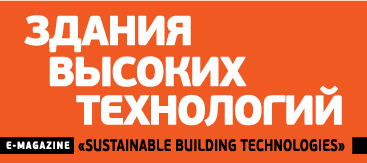
Welcome to «Sustainable Building Technology», the new e-magazine from ABOK. The introduction of SBT, is very timely and heralds the increasing sophistication and professionalization of the green building profession in Russia. The magazine offers green building technology and design information by professionals, for professionals – even the e-format is green!
The construction and operation of buildings causes more environmental damage than any other human activity. Buildings are directly and indirectly responsible for approximately 50 percent of global energy consumption and use the vast majority of the world’s drinking water. [NOTE: this is distinct from ‘fresh’ water. Buildings embody more raw materials than any other activity and each year thousands of square kilometres of green land are developed from wilderness and agriculture. Finally, people are beginning to spend more time indoors than outside, which means that providing healthy indoor environments is more important than ever to prevent sickness and disease.
Over the last 20 years, so-called «green» or «sustainable» design increasingly has been at the forefront of the global construction industry. Green standards, such as Zelyionye Standarty, LEED, BREEAM and national green standards are regularly specified by the world’s leading organizations and companies for their local and global real estate portfolios. Indeed, in most major urban areas worldwide, green certification is a prerequisite for Class A designation.
Market and academic studies show that green buildings result in higher income and higher asset values for building owners and higher satisfaction levels for the tenants.
The topic offerings of SBT are very comprehensive ranging from sharing best practices in design and engineering for energy efficiency and renewables, to spreading knowledge about the superior economics of sustainably designed buildings and their social benefits.
Because of its broad reach to over 70,000 top professional readers, I expect that it will be an audience that the e-magazine will appeal to many companies providing environmental products and services. I know I will look forward to its publication each quarter.
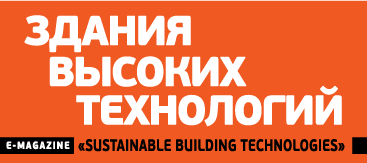
It is with great pleasure that I write this preface for the first edition of the new e-magazine «Sustainable Building Technologies» - not only because sustainability is a crucial part of my work and of my thinking, but also because of the close links that tie me to Russia and the many good friends I have there. In my office in Moscow as well as during many project meetings all over the country I have had a good chance to see the progress that Russia has achieved with regard to the improvement of energy efficiency, the consumption of resources, user comfort etc. All this is very encouraging and helps to make our homes, our offices, our infrastructure, and our cities a better place – both for ourselves and for the generations that are to come after us.
However: The task is far from completed. Both as a professor and as a designer and engineer I have worked myself for many years on the question of how we can design, build, and manage our houses in the most sustainable way. Despite the astonishing progress we have achieved over the last decades, there is still much to be done, both in Russia and abroad. Sustainability in the built environment is an extremely complex issue that needs the participation of everybody involved: The designers, the engineers, the contractors, the facility managers, and – last, but certainly not least – the client.
Moreover, we have to change general attitudes from a focus on short-term profits to a holistic view based on the long term. We have to learn to always take into consideration the whole life-cycle of a building, i.e. its design, its construction, its use, its refurbishment, and finally also its deconstruction. This implies a much wider focus than usually associated with «green building». For example, instead of thinking only of energy efficiency we also have to learn how to make our buildings fully recycleable.
The current issue of «Sustainable Building Technologies» features, among others, an article about leading rating tools in the world. DGNB, the rating tool developed by the German Sustainable Building Council, is one of the systems being presented. DGNB is not only widely used in Europe, but is currently also adapted to Brazil, China, and others. Since DGNB takes a holistic view of sustainability and puts a focus on the life-cycle, I’m convinced that it can also be of help to many architects, engineers, and clients here in Russia.
Participation and professional exchange across the borders among different disciplines and countries is the key to an improved standard in our built environment. For this, we need trainings, conferences, councils, and above all: specific publications allowing for the presentation of case-studies and state-of-the-art technology. «Sustainable Building Technologies» is one of these media, and I do wish the editors much success with their ambitious project. I look forward to presenting myself new projects in one of the future issues.
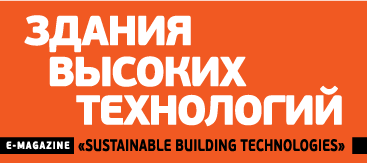
I was very pleased to be invited to write an introduction for this month’s «Sustainable Buildings Technologies». As the Director of BREEAM, it would be very easy for me to write at length about all the work we are doing on sustainability and BREEAM, but I wanted to look deeper. The choices we make when specifying products and services and designing and developing buildings, have major impacts on both the sustainability of our projects and their success.
In order to make the best choices we need information that we can trust. I therefore wanted to look at some of the product and building certification schemes that can deliver the quality of information needed.
The increasing demands from regulators and the market for greater sustainability in building developments has, perhaps inevitably, led to a rash of ‘green’ claims for building products and services. The fact that many of these are not backed up with any credible scientific data or third-party certification can make selecting them for use in a development project something of a lottery.
Achieving a more sustainable built environment depends on specifiers being able to trust the claims made for building products, systems and services
Providing impartial, authoritative information that the industry can trust is a key element of the BRE Global business. The Group which BRE Global sits in is owned by the BRE Trust, a charitable company that aims to advance knowledge, innovation and communication in all matters concerning the built environment. This ownership structure has enabled the Group to remain independent of specific commercial interests.
One way that specifiers can be assured that products and services can be trusted to perform as claimed, is to select those that have been appropriately certified. Expert, independent approval and certification schemes will ensure not only that sustainability claims are substantiated, but also that the products and services meet performance standards appropriate for their intended use.
It is important to remember, however, that there are different degrees of certification offering different levels of assurance.
With first-party certification, for example, it is the organisation providing the goods that offers the assurance that they meet certain claims. In second-party certification, an association to which the organisation belongs may provide this assurance. But in third-party certification an assessment is carried out by an independent body – such as BRE Global – which declares that the product or service will perform as required.
This independent assessment allows third-party certification to objectively distinguish products and services from others on the market, and gives customers confidence about their performance.
It is also important to distinguish certification from testing. Certification should ensure that products and services it certifies meet – and continue to meet – appropriate standards, through a robust combination of regular company audits and a schedule of on-going tests. While testing can deliver a valuable measure of a product’s performance at a given time, certification monitors that performance for as long as the product remains certified.
Whether a product is just tested or fully certified, it must be done against a robust and scientifically based standard. BRE Global, through the Trust, conducts research across the full range of the built environment. The output of this research is used both in publications to help industry, consumers and users but also as the basis for sound, technically robust standards. If is often these standards that create the real difference.
Customer concerns about construction product sourcing often extends beyond purely environmental issues. In fact the responsible sourcing of materials is often in the headlines. A number of exposés have revealed poor working conditions in some overseas factories and in the extraction of raw materials with little regard for the environment or the people that live nearby.
The wellbeing of the local workforce is just one of the wide-ranging ethical, environmental and social issues that must be considered throughout the supply-chain when determining if a product has been responsibly sourced. A number of schemes, such as Fairtrade, Rainforest Alliance and Marine Stewardship Council, have been established to enable specifiers to identify responsibly sourced materials.
The BES 6001 Framework Standard for the Responsible Sourcing of Construction Products was launched by BRE Global in 2008 as a means of certifying almost any type of material used in the construction industry. With many clients now including responsible sourcing criteria on their tender documents, the standard has been used to certify a range of common products, such as concrete blocks, bricks, cement, cladding, ready-mixed concrete, paving slabs and reinforcing steel.
If such schemes are to remain effective they must be continually monitored, improved and updated. BES 6001, for example, is currently undergoing a revision process to ensure that the Standard reflects recent developments in responsible sourcing and procurement practices.
There is, of course, more to developing sustainable buildings than specifying appropriately certified building products. A wide range of environmental, economic and social issues must be integrated in the design, construction and use of the buildings.
To help deal with these complexities a number of schemes for assessing and certifying buildings have been developed in Europe, the USA, Australia and elsewhere. The longest established and most widely used of these is the UK’s BREEAM scheme, an internationally recognised quality mark of a building’s sustainability.
Using independent, licensed assessors, BREEAM examines scientifically-based criteria covering a range of issues in categories that evaluate energy and water use, health and wellbeing, pollution, transport, materials, waste, ecology and management processes. Buildings are rated and certified on a scale of ‘Pass’, ‘Good’, ‘Very Good’, ‘Excellent’ and ‘Outstanding’.
Since its launch BREEAM has expanded from its original focus on individual new buildings at construction stage, to encompass the whole life cycle of buildings from planning to in-use and refurbishment – and to include whole communities. with well over a million registered for certification.
The Scheme’s regular revisions and updates, designed to widen its impact on sustainability, respond to feedback from industry and international sustainability strategies and commitments. This on-going evolution has allowed BREEAM to remain at the leading edge of scientific development and innovation.
Along with quantifiable improvements – for example in carbon emissions, resource consumption, waste reduction – less tangible improvements in quality are increasingly being noted in buildings designed with a strong focus on sustainability.
Achieving the standards required by a scheme such as BREEAM requires careful planning, design, specification and detailing, and a good working relationship between the client and project team. These are also the very qualities that can produce better buildings and better conditions for building users. The greater efficiency and quality associated with sustainability are also helping to make such building more commercially successful. There is growing evidence, for example, that BREEAM-rated buildings provide increased rates of return for investors, and increased rental rates and sales premiums for developers and owners.
A study carried out by Maastricht University and published by the Royal Institution of Chartered Surveyors (RICS) in March 2012, entitled Supply, Demand and the Value of Green Buildings, provides empirical evidence of the value of BREEAM certified buildings. The study used a sample of office buildings in London, using data from transactions over the 2000–2009 period and found that these buildings achieved a premium on transaction prices and on rents.
By its very nature sustainability is all encompassing – not limited to any particular sets of products, buildings or issues. Our assessment and certification systems must be widened accordingly if the momentum for greater sustainability in the built environment is to be maintained.
BREEAM has already been expanded from a scheme able to assess office buildings, to one that can be used on almost any type of building in any location. The range of issues addressed by the Scheme has also grown, but many more environmental, social and economic aspects need to be considered. The challenge is to broaden the Scheme without increasing its complexity – expansion must go hand-in hand with efforts to make BREEAM more accessible and transparent. The support and feedback from the industry that we have enjoyed to date will be vital in this process.
The eventual goal is to make sustainability mainstream and routine – involving everybody. We will need to link tools such as BREEAM to BIM and a wide range of other databases to allow sustainability information to be quickly and easily accessed.
The work that the BREEAM team in the UK and the network of National Scheme Operators that are connecting together worldwide is working to make a real difference on this agenda. An agenda that is changing, but also exciting and rewarding to ensure the links not only between Environmental, Economic and social success, but also the quality of our build environment.
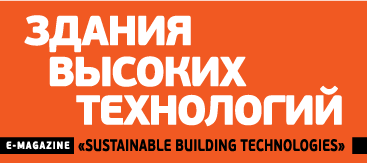
Michael Schmidt, Prof. Dr.-Ing., President REHVA
The building industry and as part of that the building services systems industry are facing huge tasks. We all together have to provide energetically, ecologically and economically sustainable buildings in the future. This does not only apply to new buildings but to all existing buildings as well, which have to be refurbished.
To share the knowledge about solutions for that on an international level is always very desirable. It is one of the approaches to get the necessary pace into the development.
We in REHVA therefore very much welcome the new journal and we wish it all success in the future.
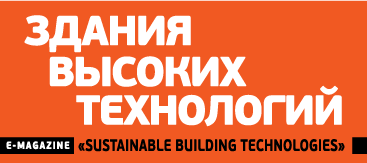
We are very pleased to hear about the new magazine published by ABOK about «Sustainable Building Technologies».
As you know, the aim of AiCARR is to develop and disseminate the culture of sustainable comfort, so we’re very happy to welcome partner Associations who are passionately involved in improving and spreading technical and scientific culture in their country.
We wish you great success and really look forward to a fruitful cooperation in the future.
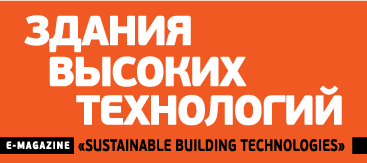
Nachhaltige Gebäude und deren Gebäudetechnik sind wichtige Zukunftsthemen, denen wir uns heute im Interesse der nächsten Generationen stellen müssen. Der Ressourcenverbrauch bei der Errichtung und dem Betrieb von Gebäuden muss deutlich gesenkt werden. Diese Themen liegen dem VDI und insbesondere der VDI-Gesellschaft Bauen und Gebäudetechnik besonders am Herzen. Im Rahmen der VDI-Richtlinie VDI 6028 Blatt 1.1 arbeiten die ehrenamtlichen Mitglieder des VDI an den Steckbriefen für die Zertifizierung von Gebäuden und damit direkt an Nachhaltigkeitskriterien von Gebäuden mit. In dieser Richtlinie geht es insbesondere um die Themen Anpassungsfähigkeit, Sicherheit und Ausstattungsqualität.
Bei der Diskussion um Nachhaltigkeit darf die Nutzungsqualität nicht außer Acht gelassen werden. Dies betrifft sowohl die thermischen als auch die hygienischen Parameter. Der VDI hat im Rahmen der VDI 6022 eine spezielle Weiterbildung zum VDI-geprüften Fachingenieur Raumluftqualität am Markt etabliert, um die dauerhafte und zuverlässige Einhaltung der raumlufttechnischen Hygiene in Gebäuden sicherstellen zu können.
Die VDI-Gesellschaft Bauen und Gebäudetechnik möchte die Gelegenheit nutzen, dem neu herausgegebenen Fachmagazin «Sustainable Building Technologies» und den Mitgliedern von ABOK viel Erfolg bei der weiteren Entwicklung des Nachhaltigkeitsgedankens in der Gebäudetechnik zu wünschen.
